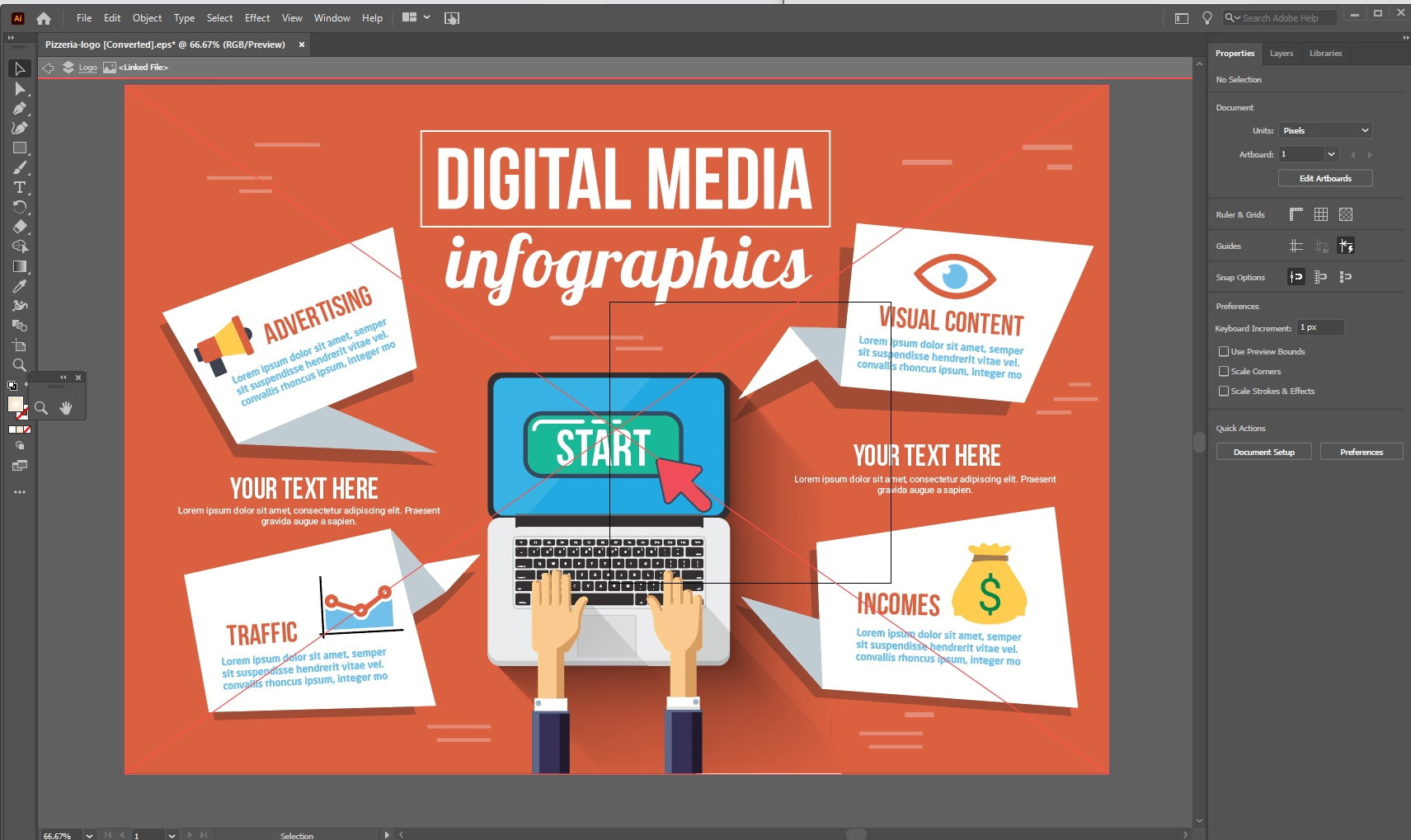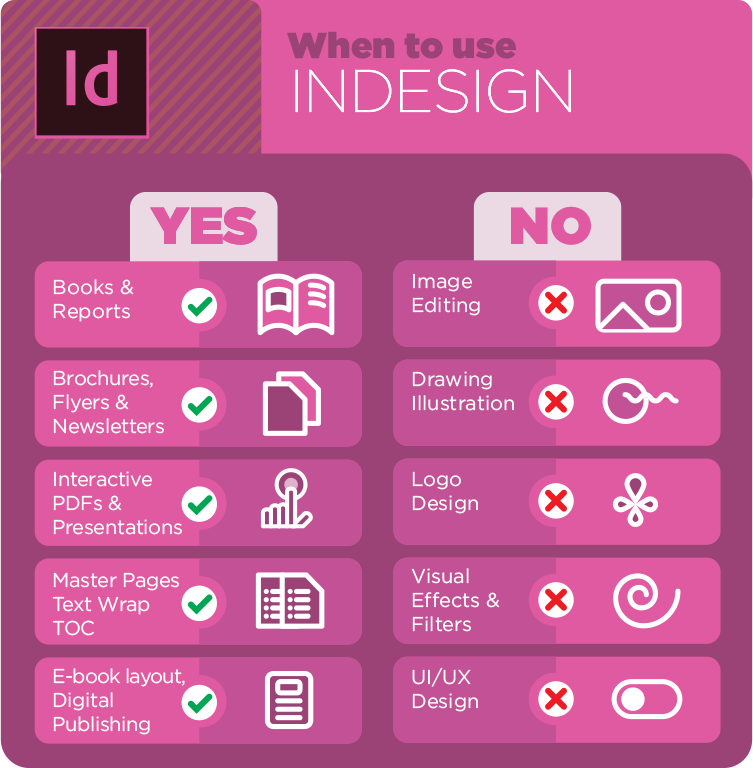

Starting with creating a new document, firstly, open the software, you will see an introduction window pop-up that lets you gain access to existing files and recently closed files.

Here some web design tips for beginners on how does InDesign works.

To learn InDesign, a beginner can seek personal training, certification, hands-on classes, books, or online tutorials. Grab Adobe Illustrator InDesign vs Illustrator: How do they work? How does InDesign work? Moreover, it also offers multiple artboards, hence, you can brainstorm and refine ideas.

ADOBE ILLUSTRATOR VS INDESIGN SOFTWARE
The unique thing about Illustrator is that it is one of the best vector graphics software in the industry. It is used by designers to create logos with the help of default brushes it offers. However, it is a mathematical grid used to create vector design. Similar to InDesign, Illustrator is also a product by Adobe. And it is auto integrated with Adobe publishing Suite. It is mainly used to create flyers, posters, newspapers, and magazines. Design is basically a desktop publishing and typesetting software that is mainly used by publishers and artists. What is InDesign?Ĭoming from Adobe, InDesign is leading in the industry with its ability to create clean layouts for desktop and mobile devices. However, the important question is why should a designer user one over another? Well, this article aims to shed some light on the features of InDesign vs Illustrator, so you can make an informed decision on which to use. They are loaded with features and are paid software. InDesign and Illustrator both are the members of Adobe family. Let’s get rolling! InDesign vs Illustrator: What are They? So, you can pick the right one for your next project. Therefore, this InDesign vs Illustrator comparison guide introduces you to the difference between InDesign and Illustrator. However, picking the best suitable tools and software is vitally important for designers to bring quality and outshine the competition. If you look at the Preferences menu in Illustrator or InDesign you’ll see a whole section dedicated to Clipboard behaviour.When it comes to graphic designing, designers may have a wide range of tools available to produce the highest quality graphics and media. Adobe have deliberately built a lot of cross-compatibility into the clipboard of each application. When working between Adobe applications things are a little different. When copying from non-Adobe applications the content is cached in the system memory (clipboard) in a generic format, typically PICT, and will not always reproduce well. If we were to copy an image from Word, for example, and paste this into InDesign or Illustrator we end up with a low resolution, RGB ‘pasted’ graphic – there is no link to the original image as we have only copied the ‘preview’ data from Word.
ADOBE ILLUSTRATOR VS INDESIGN PDF
When printing or exporting our document the data from our linked graphic is then used and we end up with a lovely, shiny high resolution image in our final print, PDF etc… happy days! These are then ‘linked graphics’– the image we see is a preview that is used for size and positioning only. In the interest of fairness I should point out that as a general rule when working in Illustrator or InDesign the correct way to use images in your layout is to place them. In fact there are cases where it’s perfectly acceptable to copy and paste between these applications and some instances where it’s actually an advantage. The poster of the problem happened to mention ‘pasting’ some Illustrator artwork into InDesign and was advised that you should always ‘place’ into InDesign. Whilst doing some research the other day I came across a thread on a related issue on the Adobe forums.


 0 kommentar(er)
0 kommentar(er)
